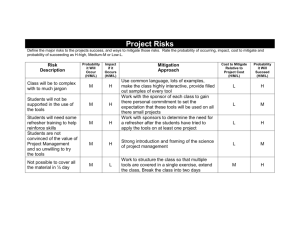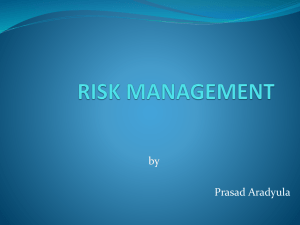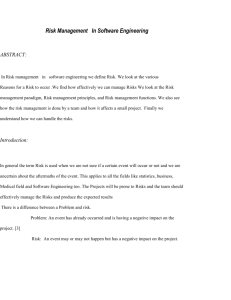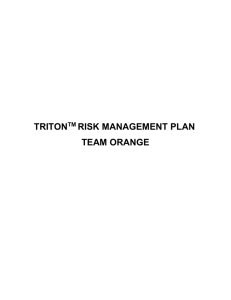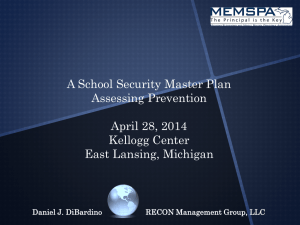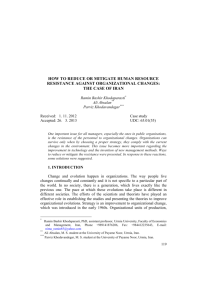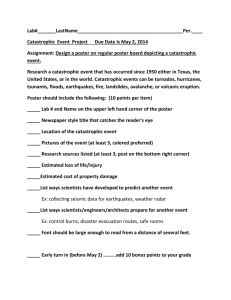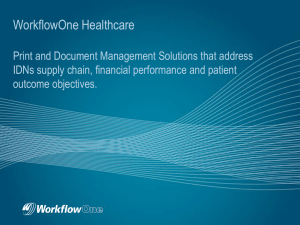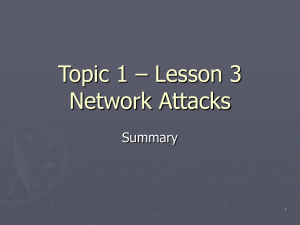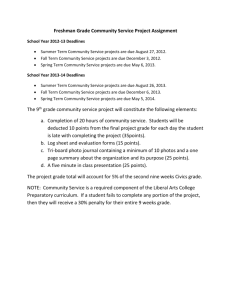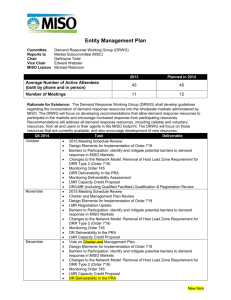Risk Management
advertisement
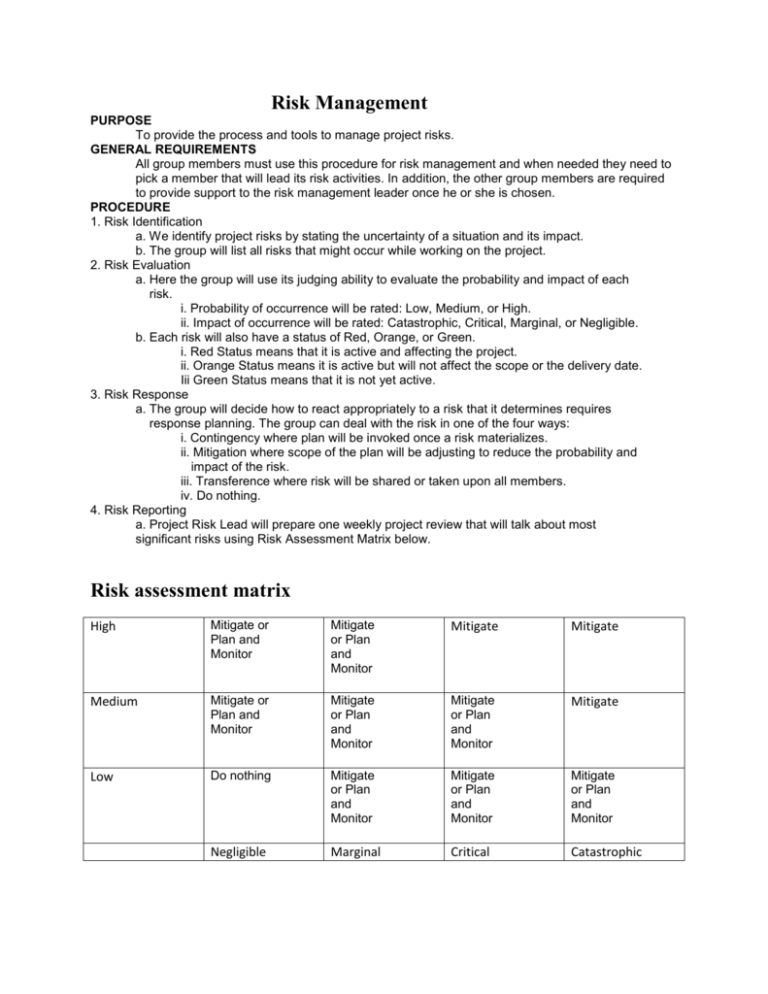
Risk Management PURPOSE To provide the process and tools to manage project risks. GENERAL REQUIREMENTS All group members must use this procedure for risk management and when needed they need to pick a member that will lead its risk activities. In addition, the other group members are required to provide support to the risk management leader once he or she is chosen. PROCEDURE 1. Risk Identification a. We identify project risks by stating the uncertainty of a situation and its impact. b. The group will list all risks that might occur while working on the project. 2. Risk Evaluation a. Here the group will use its judging ability to evaluate the probability and impact of each risk. i. Probability of occurrence will be rated: Low, Medium, or High. ii. Impact of occurrence will be rated: Catastrophic, Critical, Marginal, or Negligible. b. Each risk will also have a status of Red, Orange, or Green. i. Red Status means that it is active and affecting the project. ii. Orange Status means it is active but will not affect the scope or the delivery date. Iii Green Status means that it is not yet active. 3. Risk Response a. The group will decide how to react appropriately to a risk that it determines requires response planning. The group can deal with the risk in one of the four ways: i. Contingency where plan will be invoked once a risk materializes. ii. Mitigation where scope of the plan will be adjusting to reduce the probability and impact of the risk. iii. Transference where risk will be shared or taken upon all members. iv. Do nothing. 4. Risk Reporting a. Project Risk Lead will prepare one weekly project review that will talk about most significant risks using Risk Assessment Matrix below. Risk assessment matrix High Mitigate or Plan and Monitor Mitigate or Plan and Monitor Mitigate Mitigate Medium Mitigate or Plan and Monitor Mitigate or Plan and Monitor Mitigate or Plan and Monitor Mitigate Low Do nothing Mitigate or Plan and Monitor Mitigate or Plan and Monitor Mitigate or Plan and Monitor Negligible Marginal Critical Catastrophic GENERAL PLAN If a catastrophic risk occurs then our group will rethink whether the project can still recover and see at what cost. Then we will have to step back in the process and try to figure out where the problem lies to figure out how to fix it. Since the project has fixed deadlines and set requirements, if we do not have enough time we might have to reconsider the scope or the delivery date or both. Afterwards, we will make new time estimates for everything else that is left in the project. All risks will be analyzed with Risk Checklist, monitored by the likelihood and status of the risk, and managed by the owner listed in the table. Risk Name Description Probability Impact Action Status Owner Human Individual or group of people, illness, family emergency, etc. Medium Critical to Catastrophic Redistribute work if possible, otherwise, contact the customer. Green Team Leader Natural Weather/natural disaster, accident, etc. Medium Critical to Catastrophic Back up information on a weekly basis at multiple locations. Orange Group Operational Loss of assets, failure in distribution, etc. Medium Critical Testing prior to distribution and keeping track of assets. Green Group Procedural Internal systems or controls, failure of accountability, etc. High Critical Track results of a current procedure and come up with ways on how it can be improved in weekly meetings. Orange Team Leader Project Underestimated costs, time shortage, undesirable quality, changed requirements, etc. Medium Marginal to Critical Track the rate at which things are accomplished and how fast they are approaching optimal quality and deadlines. Orange Group Technical Advancement in technology, technical failures, component integration, etc. Low Critical Become aware of advancements in technology and reassure the project can be maintained over time. Green Group RISK CHECKLIST 1. Is there a sufficient commitment to the project? 2. Is there well defined process model? 3. How often do the requirements change? 4. Are deadlines more important than optimality of the project? 5. Are there enough people with skills needed to accomplish this project? 6. Can deadlines be met with changing scope /requirements/situations? 7. Can the project still succeed at this point and how can project’s success be measured? 8. Is there sufficient funding/resources available for the completion of the rest of the project? 9. How big and important is the risk at this time? 10. Is the process maturing with time? 11. Are there components of a previous plan that can be reused? 12. Is there a domain expert? 13. How will this risk impact other risks? 14. Is optimal quality achievable? 15. Are the customers currently satisfied? 16. Is the project closer to the goal? 17. How well is the project managed? 18. Is there an allocation plan for each risk?
